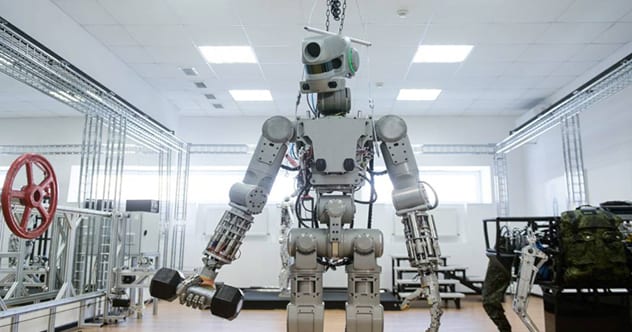 Politics
Politics  Politics
Politics  Technology
Technology Layer by Layer: 10 Revolutionary Advances in 3D Printing
 Food
Food 10 Ridiculous Myths about Dodgy Stuff in Your Food and Drink
 History
History The Ten Worst Generals in the History of Warfare
 Movies and TV
Movies and TV 10 Behind-the-Scenes Facts about Iconic Deaths in Horror Movies
 Mysteries
Mysteries 10 Incredibly Complex Mysteries Solved by Ordinary People
 Gaming
Gaming Ten Horror Games That Were Banned for Being Too Dark
 Weird Stuff
Weird Stuff 10 Funny Cases of Nominative Determinism
 Movies and TV
Movies and TV 10 Origin Stories Behind Iconic Old-School Horror Movie Villains
 Facts
Facts 10 Facts about Government Programs Born from Crisis
 Politics
Politics 10 Things You May Not Know about the Watergate Scandal
 Technology
Technology Layer by Layer: 10 Revolutionary Advances in 3D Printing
 Food
Food 10 Ridiculous Myths about Dodgy Stuff in Your Food and Drink
Who's Behind Listverse?

Jamie Frater
Head Editor
Jamie founded Listverse due to an insatiable desire to share fascinating, obscure, and bizarre facts. He has been a guest speaker on numerous national radio and television stations and is a five time published author.
More About Us History
History The Ten Worst Generals in the History of Warfare
 Movies and TV
Movies and TV 10 Behind-the-Scenes Facts about Iconic Deaths in Horror Movies
 Mysteries
Mysteries 10 Incredibly Complex Mysteries Solved by Ordinary People
 Gaming
Gaming Ten Horror Games That Were Banned for Being Too Dark
 Weird Stuff
Weird Stuff 10 Funny Cases of Nominative Determinism
 Movies and TV
Movies and TV 10 Origin Stories Behind Iconic Old-School Horror Movie Villains
 Facts
Facts 10 Facts about Government Programs Born from Crisis
10 Ways Nerds And Scientists Have Inspired Each Other
There’s no doubt about the connection between nerds and scientists. Often, the culture of one feeds the other. Perhaps it is because the phenomena of the natural and technological worlds become building blocks when creating fantastic fictional worlds.
However, it is not always the scientists who inspire nerd culture to provide the elements to create wonderful worlds of fantasy. Sometimes, the influence travels in the opposite direction and inspires scientists to examine fictional worlds to understand our own natural world.
Regardless of the direction from which ideas flow, an incredible symbiotic relationship exists between both spheres.
10 Moving Atoms
In September 1989, IBM physicist Don Eigler managed to arrange 35 Xenon atoms to spell out “IBM.” This amazing feat was made possible by a scanning tunneling microscope. Single atoms are arranged by using a sharp tip to move over a surface and release attractive and repulsive forces to pick up and put down the atoms.
Since then, physicists have managed to write the word for “atom” in Japanese Kanji, create the world’s smallest abacus, and leave notes for colleagues. The culmination of their work is depicted by manipulating atoms in the short film, “A Boy and His Atom,” which is more science than fiction.
While the real-world application of building on such a small scale has not been fully realized, it is predicted that the discoveries made with this technology will assist in developing life-changing nanotechnology.[1]
9 Lucy
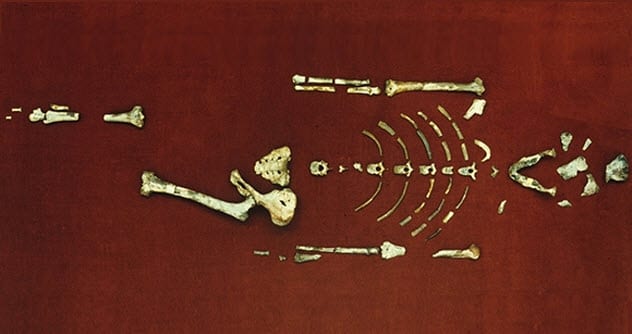
Perhaps one of the most iconic fossils in the world is that of Lucy the Australopithecus afarensis. Discovered in 1974 in Hadar, Ethiopia, by Donald Johanson and Tom Gray, Lucy is dated to have lived about 3.2 million years ago.
Her curved spine, bicondylar knees, and pelvic structure indicate that she was primarily bipedal. Thus, she was one of the oldest hominid ancestors at the time she was discovered.
What makes this discovery so nerdy, though?
After they initially found the remains, the team partied into the night. The popular Beatles song “Lucy in the Sky With Diamonds” played throughout the night. Like all good stories, nobody knows exactly who decided to call her Lucy, but it was clear that the Beatles inspired the naming of one of the most famous human ancestors.[2]
Although it may seem like a stretch to consider it nerdy to name a fossil after a song by the biggest pop band in history, I would consider Beatlemania to be an offshoot of “nerd.”
8 Sonic Hedgehog Gene

Scientists who discover genes are a little eccentric when it comes to naming them. The most popular may be the Sonic Hedgehog gene, which is responsible for many aspects of a human’s early development. This includes signaling the split of the brain into a left and right side and the split of the eye field so that we develop two separate eyes.
Sonic Hedgehog got its name from two scientists. In the early 1990s, Christiane Nsslein-Volhard first discovered the gene when she deactivated it in fruit flies. This caused a mutation resulting in the growth of small denticles that resembled hedgehog quills. The gene was simply named Hedgehog.[3]
Three similar genes were later discovered. They were given the names Indian, Desert, and Sonic. While Indian and Desert are names of real species of hedgehog, Sonic came from researcher Robert Riddle. He was inspired by a promotional comic of Sonic the Hedgehog that his daughter had brought over from the UK before the video game was released.
Recently, some scientists have been trying to cut down on the silly names that researchers have been giving to genes. They want to be more professional when speaking to human patients. Although the gene in question is now officially known as SHH, most people still refer to it as Sonic Hedgehog.
7 William Gibson And The Internet

When we watch films or read books set in the future, we often laugh at how far off their vision can be. Take a look at Back to the Future‘s view of what 2015 would look like compared to what really happened during 2015. While predicting the future is often a crapshoot, many of the writings of William Gibson have been extremely accurate.
With his first novel, Neuromancer, written in the 1980s, Gibson was able to envision a world much like our current one in terms of the Internet and how computers have seeped into every aspect of our lives. Gibson is credited for creating the terms “cyberspace” and “computer virus” as well as inspiring the film series The Matrix.
Gibson downplayed many of his predictive abilities and insisted that his writings were focused on how people were living currently and following those trails to what they might evolve into. Despite his predictive powers and inspiration on the world of computer science, Gibson humorously points out that the major thing he never thought to include in his story was the prevalence of cell phones.[4]
6 Cthulhu

H.P. Lovecraft was unable to attend college and enter the scientific community due to a childhood illness. However, like the cult of the tentacled cosmic entity Cthulhu that was bent on destruction and chaos, scientists have been spreading the influence of Cthulhu throughout the scientific world and beyond.
First, a spider in the redwoods of California was given the name Pimoa cthulhu. While the spider doesn’t exactly resemble the evil being, the discoverer G. Hormiga states that it was “named after H.P. Lovecraft’s mythological deity Cthulhu, akin to the powers of chaos.”
Additionally, microbes referred to as protists found in the guts of termites have been named Cthulhu macrofasciculumque and Cthylla microfasciculumque, an ode to the Great One and his secret daughter.[5]
These microbes have been described by the researchers as having up to 20 flagella (tentacles) that they use to locomote like an octopus. They are responsible for breaking down the wood that termites eat into a sugar that the creatures can digest.
Extending past our world and into the far reaches of space, a region on dwarf planet Pluto was named after Cthulhu. The region is one of the darkest features on the planet, and that includes places named after evil Lord of the Rings creatures and the Mayan god of death.
5 The Lord Of The Rings Inspires Everything

Speaking of evil creatures from The Lord of the Rings, it’s time to talk about one of the most present forms of nerd culture in the scientific world. The Lord of the Rings is pervasive in almost every scientific discipline—from the taxonomy of creatures both extant and extinct to regions of planets and comets.
A software company named Palantir also works with the CIA and NSA. In case you’re wondering, Palantir refers to Middle Earth’s version of a crystal ball that allows the user to see anywhere in the world. Let that sink in.
Even more interesting, J.R.R. Tolkien’s influence has extended beyond scientists paying homage by naming discoveries after things from Middle Earth to actual scientific research based on Tolkien’s works. For instance, researchers have created climate models for Middle Earth and determined that the Shire, the home of the hobbits, is much like Lincolnshire or Leicestershire in the UK and that Mordor is similar to Los Angeles or West Texas.
Others have investigated the oxygen levels of Middle Earth to explore how men in that world could perform fantastic feats of athleticism, whether Frodo could survive a stabbing while wearing mithril armor, and the physical and mental disabilities of Gollum.[6]
While these articles are somewhat tongue-in-cheek, real science was conducted to investigate these aspects of the story. However, the question remains: Why do scientists strive so hard to come up with scientific reasoning for Tolkien’s works?
It is because they are inspired by the depth that was put into these stories. Tolkien created languages, lineages, and geographies in his stories. That kind of attention to detail in world-building attracts and inspires scientific minds.
4 IBM Watson
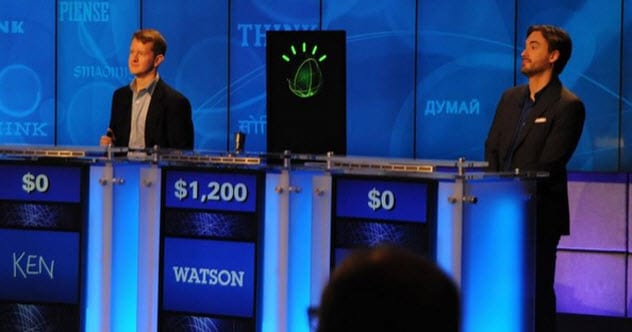
IBM is known for creating interest in science and technology with their Grand Challenges. These challenges typically pit man versus machine in tests of intellectual prowess.
IBM previously had created Deep Blue, the computer responsible for defeating Grand Master Garry Kasparov at chess. Searching for their next Grand Challenge, IBM worker Charles Lickel looked to Ken Jennings’s record 74 wins on the quiz show Jeopardy.
Originally considered to be “too gimmicky,” the project developed from creating a system that could barely beat a five-year-old to winning against two of Jeopardy‘s legendary contestants in a three-day, head-to-head challenge.
Beyond simply answering questions, the system—named after the company’s founder, Thomas J. Watson—had to overcome the challenge of formulating questions from clues given on the show. To a human, the concept seems fairly straightforward. But for a machine, this is a precise and nuanced difference.
To accomplish this, IBM developed software called DeepQA that analyzed what was being asked and the information it was being given. The system would create multiple threads with likely answers. Based on the likelihood of being right, Watson would give the answer.
For Jeopardy, over 200 million pages of information were generated that Watson would comb through for answers. Back in 2011, when Watson demolished the other contestants with a lead of more than $50,000, Watson was the size of the entire room.
Currently, Watson is used for information sectors and can fit in the vegetable crisper of a refrigerator. With the supercomputer’s huge advancements in the past few decades and its proof of intellectual superiority, Ken Jennings said it best when he admitted, “I, for one, welcome our new computer overlords.”[7]
3 Scientific Studies From Interstellar
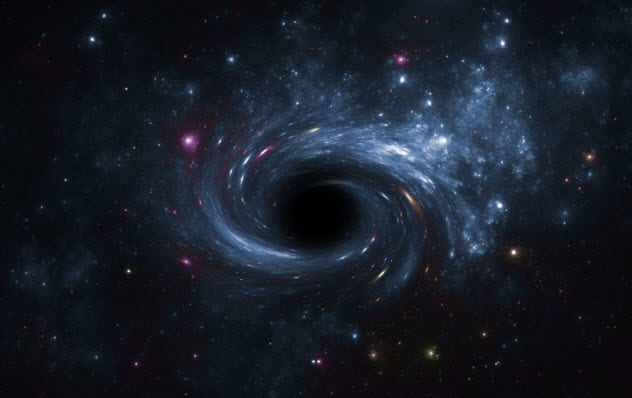
Films often require suspension of disbelief to some degree. Whether it is adding dramatic flair, creating wholly fictional worlds, or slightly changing the physics of reality to make a more compelling story, filmmakers are known to bend the truth a bit.
So it should raise some interest when astrophysicists and other scientists credit a film with being an accurate representation of reality. This makes Christopher Nolan’s movie Interstellar stand out among most other high-budget films.
To give the most accurate portrayal of black holes in real life, the special effects team Double Negative partnered with physicists such as Kip Thorne, who also participated in Carl Sagan’s film Contact.
While the filmmakers have admitted that some true features one would see in a black hole were toned down to reduce confusion, the results seen in the film are the most accurate depiction and have led to some interesting discoveries about the behavior and morphology of black holes. By studying the code used to create the visual effects in the film, physicists have published scientific papers detailing the behaviors of black holes.[8]
2 James Cameron Reaching Deepest Point In Ocean
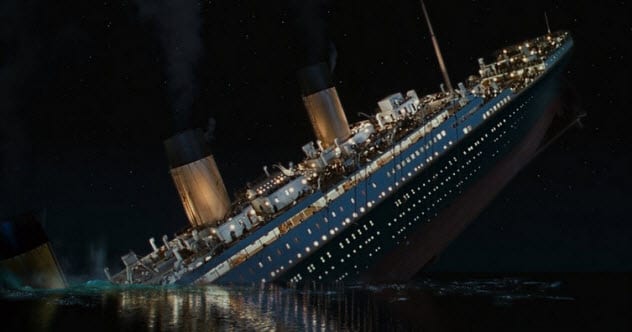
While Christopher Nolan’s film took us through the unexplored reaches of the final frontier, the work of James Cameron has helped science explore the unseen depths of our own planet.
In March 2012, James Cameron, director of some of the most iconic films in history (Titanic, Avatar, The Terminator) partnered with scientists to complete a solo descent into the deepest portion of the Mariana Trench known as Challenger Deep.
This was the first time since the 1960s that anyone had descended to these depths and the first time that anyone had done it solo. The purpose of the mission was to explore the deep unknowns of the planet and to possibly bring back any life found for research purposes.
So, how did the famous filmmaker manage to become the first and only person to ever reach the deepest part of the Mariana Trench? Cameron answered, “I sort of joke about this, but it’s more true than not that I made the movie because I wanted to do an expedition to the wreck of the Titanic, and I did explore it.”[9]
For Cameron, there is no separation between explorer and storyteller. His blockbuster films are the ways he tells his stories about the inspiring majesty of nature that he has explored.
1 Cost Of Death Stars Destroys Empire
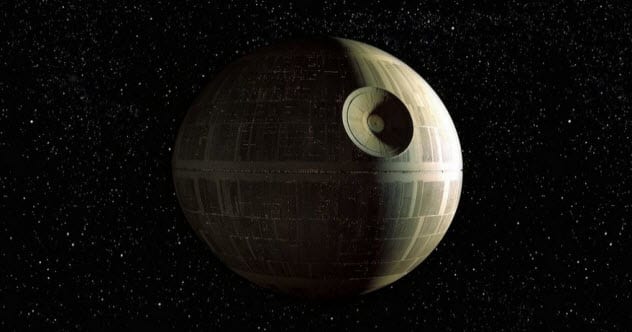
In what may be one of the most thorough accounts of “they did the math,” Zachary Feinstein took an in-depth look at the galactic economy and the potential catastrophe that destroying two death stars would have on the economy. Feinstein published his findings in 2015 in an article titled “It’s a Trap: Emperor Palpatine’s Poison Pill.”
He determined that the destruction of both death stars in the original Star Wars trilogy would have tragic economic consequences if the Rebel Alliance was not prepared for any kind of buyout.
Based on previous research, the materials and development (in 2012) would have cost a grand total of at least $419 quintillion. Although that’s a large number, Feinstein notes that the galactic economy surely is larger than our piddly US economy.
Then Feinstein goes on to develop a picture of how the galactic economy would have looked and the toll that destroying two death stars would have. The argument is that the empire would have taken out a government loan to build these hulking planet destroyers.[10]
With the death of Emperor Palpatine, the destruction of both death stars, and the dissolution of the empire, the borrower would default on the $419 quintillion loan (without anyone to pay for it) and throw the economy into a huge deficit unless the Rebel Alliance would have planned for such a circumstance.
But as Feinstein notes, the Rebel Alliance probably had no such plans. As best explained by one of their highest-ranking members, the rogue-like Han Solo: “Never tell me the odds.”
+ The Time An Astronaut Called Into Car Talk
Car Talk was a radio show that aired between 1977 and 2012 and featured the Boston-accented brothers Tom and Ray Magliozzi. The show consisted of the brothers taking calls from people around the country asking about their car troubles.
The simple concept of the show eventually became comedic as the brothers argued and laughed about the strange experiences people would have with their cars. Perhaps one of the strangest calls on the long-running show came from John in Houston in 1997.
The twice that I’ve driven this thing off the line, when I first start it up, it starts great. It starts really, really well, and it runs incredibly rough for the first two minutes. This is one of those puzzlers. After the first two minutes, after this really rough ride, there’s kind of a jolt. And then it runs smooth for about six and a half minutes, and then at that point, the engine dies.[11]
The caller informed them that he was talking about a government vehicle. The brothers weren’t easily fooled and soon found out that the caller was John Grunsfeld aboard the space shuttle Atlantis. “Not exactly our area of expertise,” the brothers concluded.
George enjoys reading, writing, and playing guitar. He likes writing about science.
Read about more incredible inventions and technologies inspired by unusual sources on 10 Incredible Inventions Inspired By Plants And Animals and 10 Real World Technologies Inspired By Video Games.


